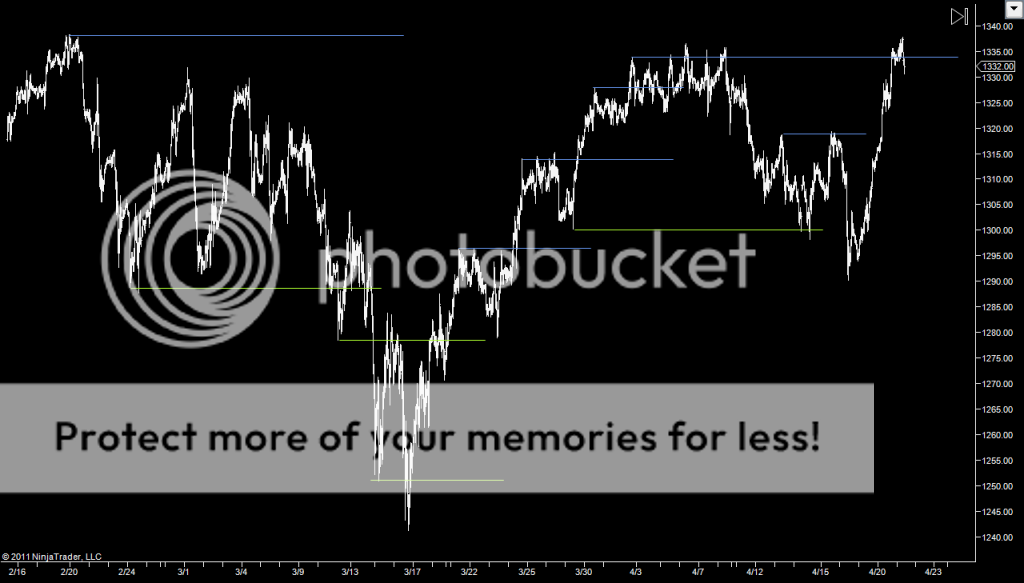I think you're right about who is taking the otherside of the trade, but this only works on smaller timeframes. The chances are if the intraday level is obvious then a lot will be looking at it they will caught out like you say. I think what you dont understand is that most retail traders don't buy at support and sell at resistence, but they do the opposite and play the break out and get caught trying to go long or short through it. So on an intraday timescale you want to fade the breakout instead of buy or sell S&R? All financial instruments have their own unique characteristics, hence S&R cannot be the only tool in the toolbox. I would never dismiss it though.
So S&P is a faders market, i can kinda get that as USDCAD is similar to that and they highly correlated, but the market is rangebound 80% of the time anyway, so i'm not suprised. USDJPY is similar. I would rather fade it than play a breakout.
Let's take the S&P, which I agree is a faders market. I agree these levels cannot be ignored too but newbies read this forum and actually want specifics which no-one seems to want to discuss.
If trade A faded the market at resistance and trader B played the breakout (lets presume 1 tick over the line), then both traders would lose over time. Partly this is a symptom of attempting to take a totally objective approach to trading.
There's a link on Dantes post above to "tips from succesful traders" one of them is:
2. Double tops and bottoms can be very profitable opportunities
Sell at double tops and buy at double bottoms AS they form. These are potentially very profitable opportunities and you can trade them with tight stops.
Is this comment REALLY from a succesful trader? If so - what does it suggest, exactly? Let's say you have a 'resistance level at 1350.00' - where do you fade it?
1 - with a limit at 1350.00?
2 - with a limit at 1348.00? To catch the shallow reversals
3 - with a limit at 1352.00? To catch the 'stop run'
4 - with a a stop order at 1348 After it hits 1350, to effectively get in when it's confirmed?
Where are your 'tight' stops then?
1352-1253 ? Might seem logical, not many retailers will be prepared to put in more than a 3 point stop but what if you got in at 1348? Are you going to give up 5 points on the trade? Seems you's need some pretty wide targets right?
Visually, the levels are very appealing in hindsight but if you consider the risks and the games played, these areas are not the best entry points. Note also that when you look back at old charts, the failed levels don't stand out much.
The best thing you can do at those levels intraday is - NOTHING. There's simply too much going on there, too many people trying to play it and too many people leaving orders in really obvious places.
The second best thing is to let people get burnt a few times before you enter. Let the first reversal traders and the first breakout traders get burnt first. If retail shorts have been run over 2 or 3 times, you can be sure they will think twice about shorting and are probably considering the long side. This is a much better time to short.
Of course, if you are using the Tape/DOM, sometimes these reversal points are delivered on a plate, but this is not the norm. Most people use charts only and therefore wont benefit from this.



